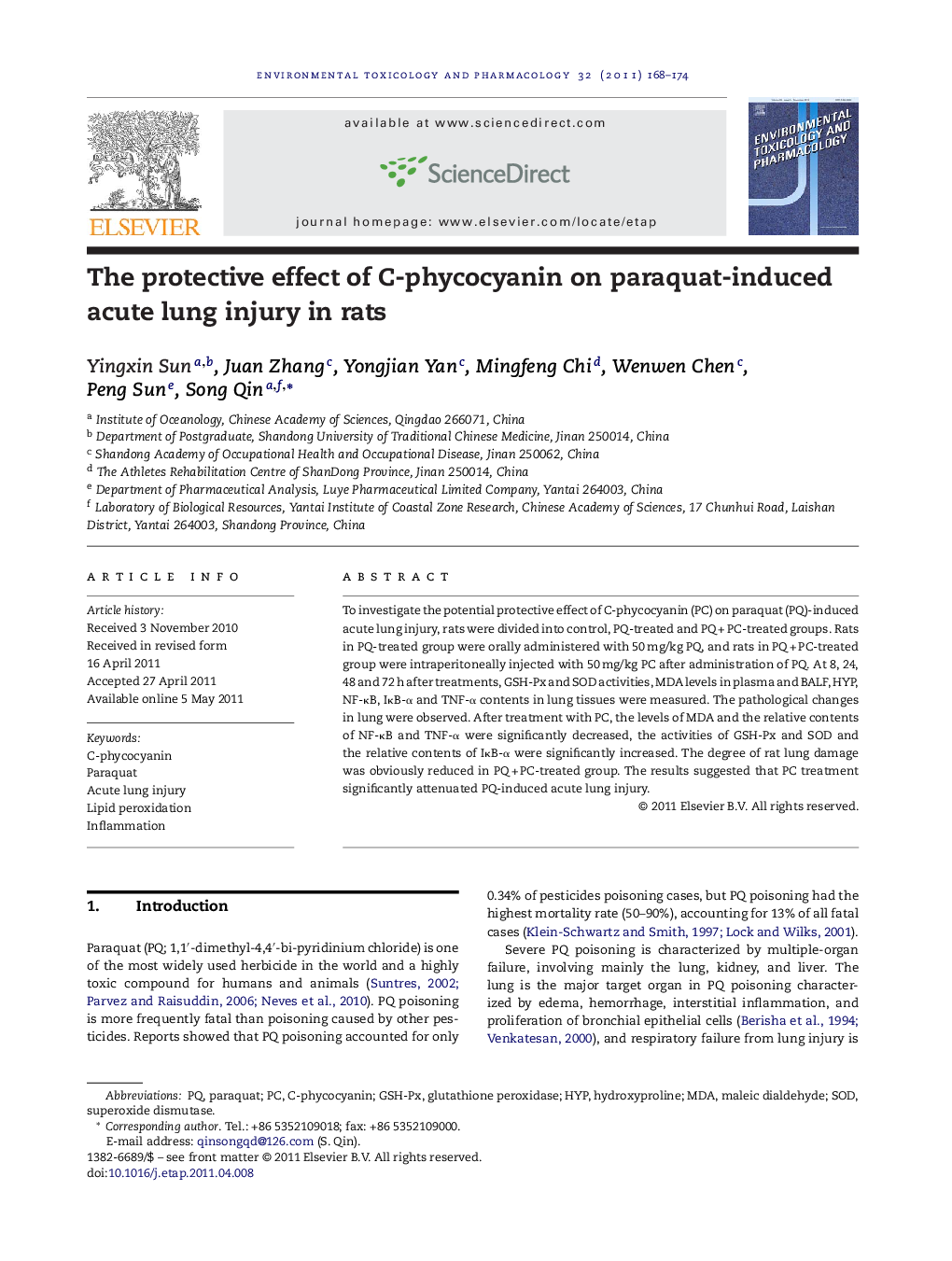| Article ID | Journal | Published Year | Pages | File Type |
|---|---|---|---|---|
| 2583790 | Environmental Toxicology and Pharmacology | 2011 | 7 Pages |
To investigate the potential protective effect of C-phycocyanin (PC) on paraquat (PQ)-induced acute lung injury, rats were divided into control, PQ-treated and PQ + PC-treated groups. Rats in PQ-treated group were orally administered with 50 mg/kg PQ, and rats in PQ + PC-treated group were intraperitoneally injected with 50 mg/kg PC after administration of PQ. At 8, 24, 48 and 72 h after treatments, GSH-Px and SOD activities, MDA levels in plasma and BALF, HYP, NF-κB, IκB-α and TNF-α contents in lung tissues were measured. The pathological changes in lung were observed. After treatment with PC, the levels of MDA and the relative contents of NF-κB and TNF-α were significantly decreased, the activities of GSH-Px and SOD and the relative contents of IκB-α were significantly increased. The degree of rat lung damage was obviously reduced in PQ + PC-treated group. The results suggested that PC treatment significantly attenuated PQ-induced acute lung injury.
► The lung is a major target organ in paraquat poisoning. ► The mechanism for paraquat toxicity involves oxidative stress and inflammation. ► C-phycocyanin possesses antioxidant, radical-scavenging, anti-inflammatory effects. ► C-phycocyanin significantly attenuates PQ-induced acute lung injury in rats.
